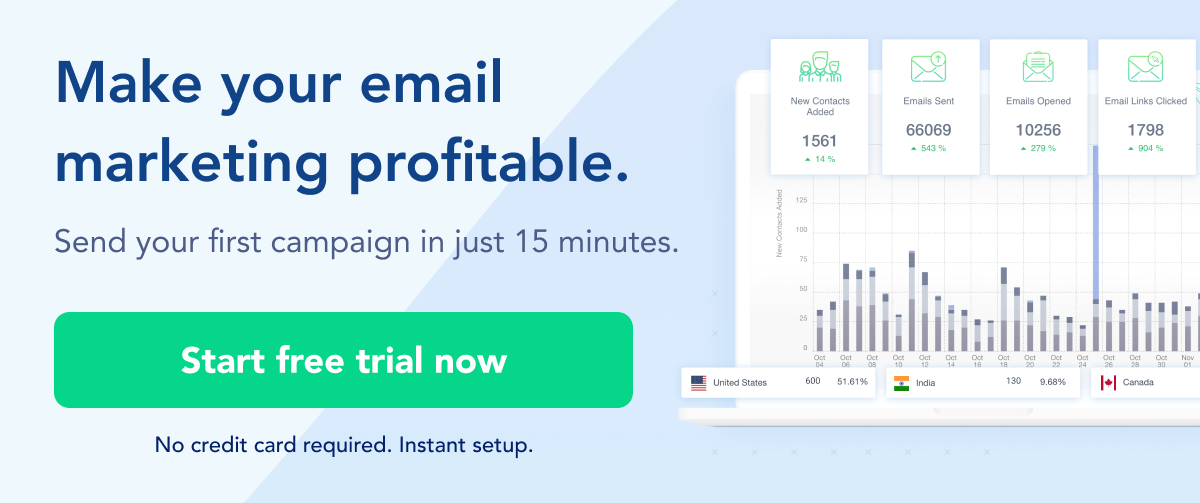Email marketers are constantly navigating the complex landscape of regulations and laws, such as GDPR and CAN-SPAM, aiming to enhance their brand's integrity while maximizing engagement. The challenge lies not only in staying up-to-date with ever-changing laws but also in implementing practices that ensure every email sent is compliant.
This blog aims to unravel the best practices for achieving perfect email compliance, offering insights that might be new even to seasoned professionals. Understanding these practices could be the key to transforming your email marketing strategy, ensuring it is both effective and lawful.
Table of Contents
Get Explicit Consent From Your Subscribers
One pivotal practice for maintaining impeccable email compliance is obtaining and managing explicit consent from your recipients.
Explicit consent in email marketing refers to a clear, affirmative action taken by an individual to show they agree to receive marketing communications from a specific sender.
By prioritizing explicit, informed consent and respecting subscriber preferences, you not only adhere to legal standards but also build a foundation of trust and relevance with your audience. This approach ensures that your email marketing efforts are both compliant and effective.
How it is done:
- Opt-In Forms: This is the most common method for obtaining explicit consent. An opt-in form should clearly state what the subscriber is signing up for, whether it's a newsletter, promotional offers, or updates. The key here is clarity; the subscriber should know exactly what they're agreeing to receive.
- Double Opt-In Process: This adds an extra step to the consent process. After a subscriber fills out an opt-in form, they receive an email asking them to confirm their subscription. This ensures that the consent is verifiable and that the subscriber genuinely wants to receive emails.
- Clear Language: Use straightforward language that's easy to understand. Avoid legal jargon or vague terms that might confuse subscribers about what they're signing up for.
What not to do:
- Pre-Checked Boxes: This practice assumes consent rather than obtaining it explicitly. A subscriber should actively choose to opt-in, rather than having to opt-out.
- Assuming Consent from Interaction: Just because someone has interacted with your brand or made a purchase does not mean they've agreed to receive all forms of communication from you. Explicit consent must be obtained for email marketing specifically.
- Burying Consent in Terms and Conditions: Consent should not be hidden within lengthy terms and conditions or privacy policies. It needs to be a distinct action that the user can clearly understand and agree to.
Managing consent doesn't stop at obtaining it. You should make it easy for subscribers to see what they've signed up for and offer them an effortless way to change their preferences or opt out entirely.
For example, a simple "Manage your subscription" link at the bottom of your emails respects your subscribers' autonomy and reinforces the trust they have in your brand.
Practice Good List Hygiene
Practicing good list hygiene is indeed a foundational best practice for maintaining perfect email compliance.
This approach involves regularly cleaning your email list to ensure it contains only those who are actively engaged and have consented to receive your communications.
By removing subscribers who haven't opened or interacted with your emails over a certain period, you reduce the risk of someone marking your email as spam. A spam complaint can hurt your sender reputation more than an unsubscribe, so maintaining a clean list helps keep your reputation intact.
How to Practice Good List Hygiene:
- Regularly Audit Your List: Set a schedule to review your email list's engagement metrics. Look for subscribers who haven't opened or clicked through your emails in a set period, such as six months or a year, and consider removing them.
- Implement a Re-engagement Campaign: Before removing inactive subscribers, try to re-engage them with a targeted campaign. This could be a special offer or a message asking if they wish to remain on your list. If there's no response, it's safer to remove them.
- Make Unsubscribing Easy: Ensure that the unsubscribe option is clearly visible in all your emails. Making it easy for users to opt out can prevent spam complaints and keep your list healthy.
Robust data protection and privacy measures
The General Data Protection Regulation (GDPR) represents a comprehensive privacy and security law drafted and passed by the European Union (EU), impacting organizations worldwide that handle the personal data of EU citizens.
A best practice for email marketers in complying with GDPR is the implementation of explicit, informed consent mechanisms, coupled with robust data protection and privacy measures.
We've already discussed obtaining explicit consent for sending emails so let's look at some of the ways to ensure data protection and privacy of subscribers
- Implement Data Security Practices: Secure the personal data of your subscribers through encryption, regular security audits, and access controls to prevent unauthorized access.
- Enable Easy Access to Personal Data: Under GDPR, individuals have the right to access their personal data, rectify inaccuracies, or request deletion. Ensure your systems can efficiently manage these requests.
- Privacy by Design: Incorporate privacy and data protection from the onset of designing your email marketing systems, rather than as an afterthought. This involves minimizing the data collected to only what is necessary and protecting it throughout its lifecycle.
Ensure your team is regularly trained on GDPR requirements and understands the importance of privacy and data protection. Awareness across your organization is key to maintaining compliance and fostering a culture of privacy.
By prioritizing explicit consent, safeguarding subscriber data with robust security measures, and fostering an organizational culture aware of privacy importance, email marketers can navigate GDPR requirements effectively.
Understand & Comply with CAN-SPAM Act
The CAN-SPAM Act is a law that sets the rules for commercial email, establishes requirements for commercial messages, gives recipients the right to have you stop emailing them, and spells out tough penalties for violations. Enacted in 2003 in the United States, it covers all commercial messages, which the law defines as “any electronic mail message the primary purpose of which is the commercial advertisement or promotion of a commercial product or service.”
Key Requirements of the CAN-SPAM Act:
- Do Not Use False or Misleading Header Information: The "From," "To," "Reply-To," and routing information – including the originating domain name and email address – must be accurate and identify the person or business who initiated the message.
- Do Not Use Deceptive Subject Lines: The subject line must accurately reflect the content of the message.
- Identify the Message as an Ad: The law gives you a lot of leeway in how to do this, but you must disclose clearly and conspicuously that your message is an advertisement.
- Tell Recipients Where You’re Located: Your message must include your valid physical postal address. This can be your current street address, a post office box you’ve registered with the U.S. Postal Service, or a private mailbox you’ve registered with a commercial mail receiving agency established under Postal Service regulations.
- Tell Recipients How to Opt Out of Receiving Future Emails from You: Your message must include a clear and conspicuous explanation of how the recipient can opt out of getting email from you in the future. Craft the notice in a way that's easy for an ordinary person to recognize, read, and understand.
- Honor Opt-Out Requests Promptly: You must process an opt-out request within 10 business days. You cannot charge a fee, require the recipient to give you any personally identifying information beyond an email address, or make the recipient take any step other than sending a reply email or visiting a single page on an Internet website as a condition for honoring an opt-out request.
- Monitor What Others are Doing on Your Behalf: If you hire another company to handle your email marketing, you cannot contract away your legal responsibility to comply with the law. Both the company whose product is promoted in the message and the company that actually sends the message may be held legally responsible.
Regularly review and update your email practices to ensure they align with CAN-SPAM requirements. Train your marketing team on CAN-SPAM compliance to prevent unintentional violations.
Use Tools That Make Email Compliance Easy
If you're looking for a simple way to make sure your emails are always on the right side of the law, SendX is here to help. It's built for businesses like yours, making it easy to send emails that people love and that follow all those complicated rules. With SendX, you can focus on creating great emails, knowing that the compliance part is taken care of.
SendX streamlines the compliance process by automatically managing subscriber consent and providing easy-to-use tools for creating emails that meet legal standards. It keeps track of the dos and don'ts, like making sure every email has an unsubscribe link, managing your contact lists to ensure you're only sending emails to people who have opted in, and keeping your email content within legal guidelines.
You can try it out, without any commitment, for free when you sign up here. No credit card is required and you get to test all features.



